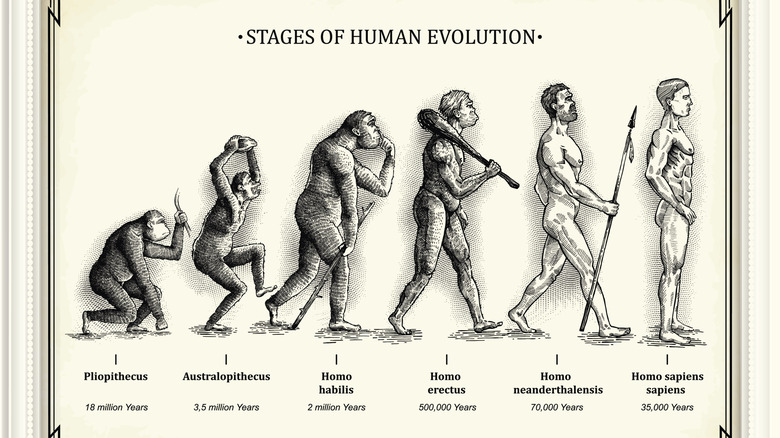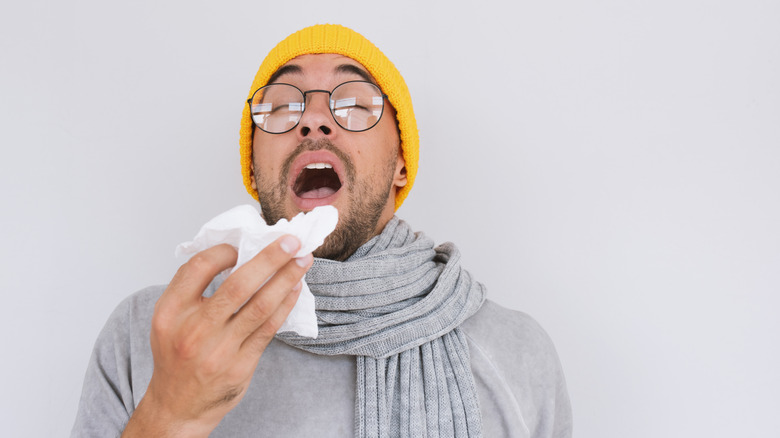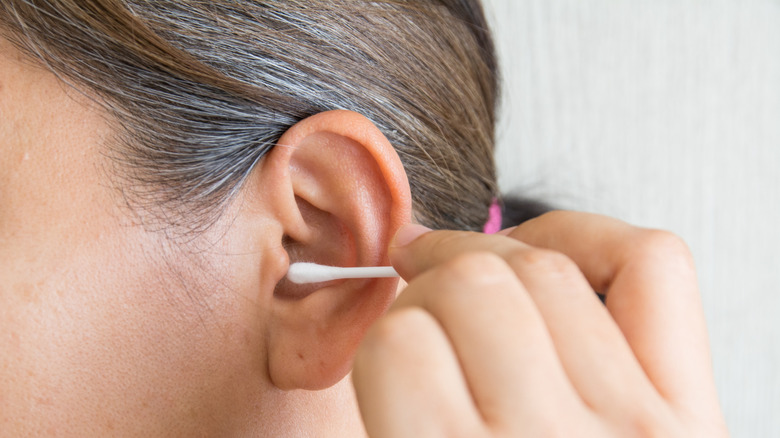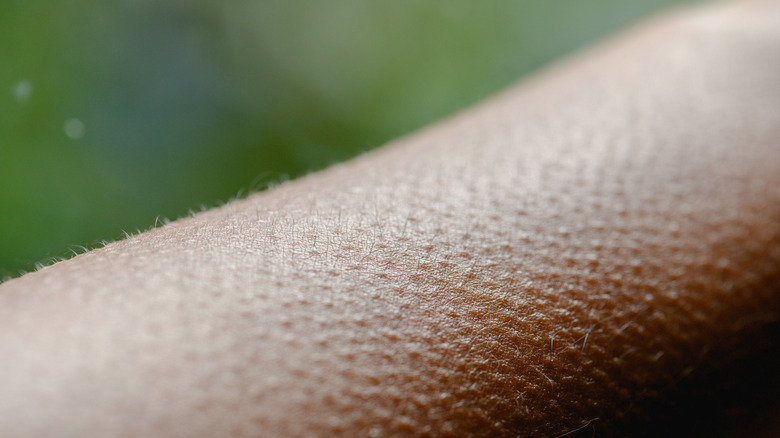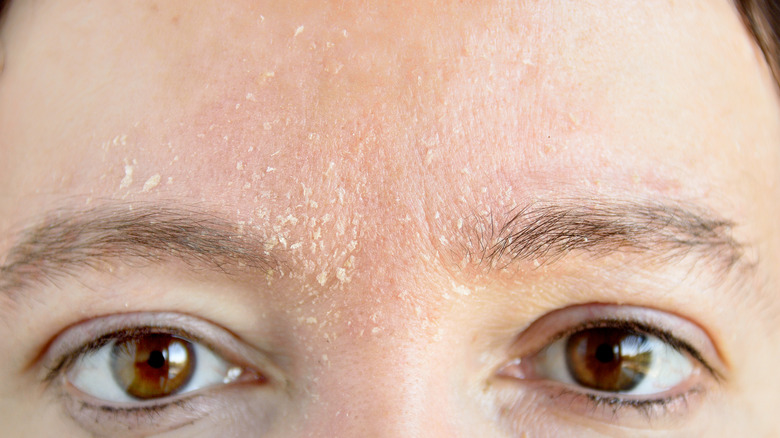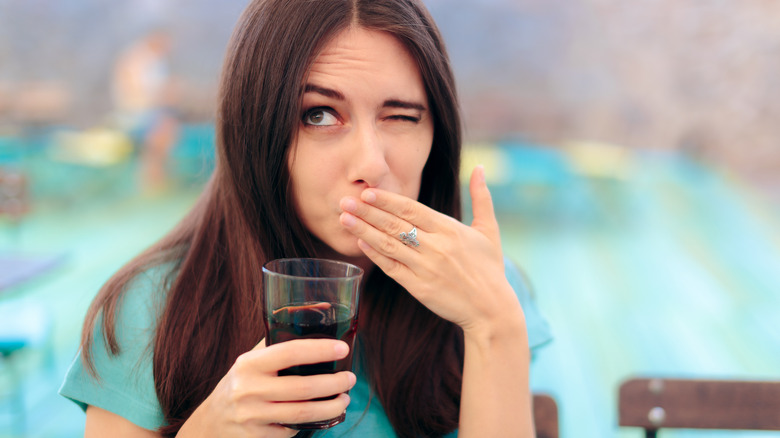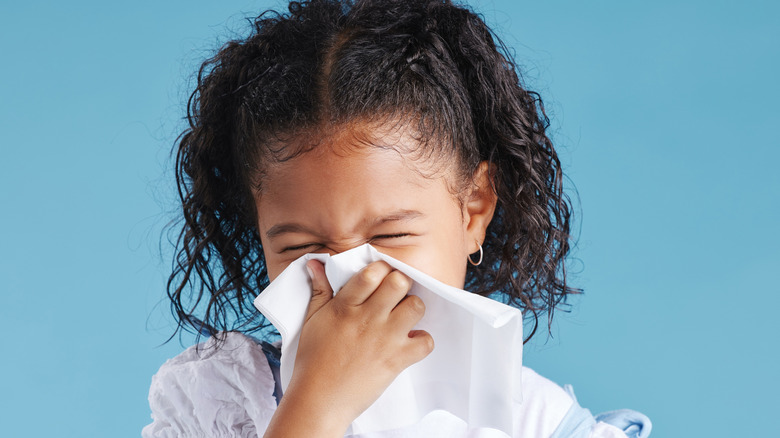10 Gross Adaptations Humans Evolved
The human body is an amazing machine, capable of unthinkable feats of endurance and biology. When you really stop to think about it though, there are so many aspects of the human body that are ultimately disgusting. From sweat to ear wax and mucus to flatulence, there are plenty of bodily functions that are determined to cramp our style.
However, most of these gross bodily functions have a perfectly reasonable explanation, as well as crucial role to play in the survival of the human race. From regulating our temperature to giving us a chance at evading predators, without these revolting traits, our species may not have survived for so long. But once you understand the science behind our stomach-churning processes, you may start to embrace them and appreciate the weird awesomeness of the human body. Let's take a look at 10 gross human adaptations, if you have the stomach to read about them all.
Sweating
If you've been for a long run in the sun and are desperate for a shower, you may not be thrilled at how amazing your body is for being able to sweat, but you should be. Without this remarkable human adaptation, it's unlikely that you would even have existed to be able to go for that run. Unlike most other animals, humans are capable of incredible endurance feats such as long-distance running, and this is largely due to the body's highly efficient cooling system. Running may be a hobby for most of us now, or a way to keep ourselves healthy, but for our ancestors, it was literally a life-saving ability. Without the capacity to outrun predators or hunt down food, we would not have survived.
Sweating may seem gross, but it is an extremely clever way for the human body to cool down. When we overheat, our brain sends a signal to our sweat glands to create water on the skin. As this sweat evaporates, it carries away the body's surplus heat and we start to cool down. Without this incredible ability, our bodies would overheat to a dangerous level.
If you're still not convinced that sweat is an extraordinary power we have evolved, consider how other animals cool down. Hippos roll around in mud, kangaroos spit on themselves and lick it off, and vultures poop on their own legs. So the next time you're drenched in sweat, just be thankful that the timeline of human evolution chose the watery path it did.
Sneezing
Sneezing is one of those bodily functions that we probably don't think of as too gross, at least until someone is standing a bit too close to you when they do it. We've all been there, pinching our nose, stretching out our face in an attempt to prevent the inevitable. And then apologizing profusely as your nasal fluids explosively make their way out of your body. As chaotic and disgusting as this process seems, it is a highly sophisticated way for your body to quickly remove unwanted invaders.
According to a recent study, sneezing has been shown to be a function of sponges, too, and since they are thought to be amongst the earliest animals to exist on earth, it means the process of sneezing has been around for more than 600 million years. In both sponges and humans, sneezing is an effective mechanism for removing irritants and foreign substances from the body. These unwanted visitors can leave the body at speeds of up to 100 miles per hour, so our bodies are pretty desperate to get rid of them as quickly as possible. Of course, the issue with these high speeds is that the pathogens then end up landing on people and objects in the surrounding area, potentially leading to the spread of disease.
Sponges sneeze much more slowly — one sneeze can take 30 minutes — but the premise is the same: to remove unwanted particles or tiny microorganisms such as bacteria and viruses from within. If you thought human sneezing was gross, consider that after a sponge sneezes, the other sea creatures in the vicinity feast on what they have expelled.
Kissing
Have you ever stopped to wonder how and why the first kiss happened? Perhaps not, and it also happens to be pretty gross. Germophobes, avert your eyes now, but a single kiss transfers around 80 million bacteria between the two mouths. But how did kissing behavior evolve?
One theory suggests this is a relic of our primate ancestors' practice of chewing food for their infants and feeding them directly mouth to mouth. More recently, researchers have proposed that it evolved from a grooming regimen from the days when we were much hairier than we are now. In a similar way that our close ancestors the apes pucker their mouths to remove dirt from each other's fur, it is possible that as newly furless creatures, we ditched the grooming stage and stuck with the final pucker as a display of affection.
There's even a theory that a kiss allows a human to subconsciously judge whether they are genetically compatible with a partner. In other animals, genes known as major histocompatabilty complex genes contain information relating to the genetic differences between individuals. It is in a species' interest to mate with a partner with different MHC genes to their own, to create stronger offspring with genetic diversity. In humans, the same genes are known as human leukocyte antigens, and are present in saliva. The subtle signs in saliva may be enough to subconsciously steer us in the correct genetic direction.
Ear wax
Ear wax is one of those bodily secretions that most of us don't like to acknowledge, but it plays an essential role in keeping our ears clean. All healthy ears contain wax, and its main job is to line the ear canal to prevent dirt and pathogens from entering into the sensitive passageway. However, issues can occur if excess ear wax builds up, which can cause hearing problems or tinnitus.
Ear wax is also antibacterial and antifungal, protecting our ears from infection. Recent discoveries have shown that ancestry will determine the color and texture of your ear wax. Most Caucasian and African people have wet, brown ear wax, and the majority of East Asians have dry, gray ear wax, as do Native Americans. The gene responsible for this variation is ABCC11, and is thought to have appeared around 40,000 years ago. The wet earwax variation is the dominant allele, meaning two parents with dry ear wax are needed for a child to have the same gray type. The two types of ear wax are likely a human adaptation to suit the temperature and climate — another example of the amazing way in which our bodies have evolved to suit our needs. A leading theory suggests that the dry ear wax evolved to trap less dust and dirt, which could have been an issue in sub-tropical climates. The next time you reach for that cotton swab, remember the importance of ear wax, and consider leaving it where it is to do its job.
Vomiting
Gross bodily functions don't get much worse than vomiting. An explosive means of ejecting unwanted items from the body, it can be painful and very uncomfortable, and thankfully, is a rare occurrence for most of us. As horribly messy as it is, vomiting is necessary to keep our bodies free of poisons, and it can even be life-saving.
When something out of the ordinary is detected in your stomach, the brain will receive a signal that something isn't right. Once it has enough of those warning signs, it sends a message back to the stomach to eject the contents via the mouth. The purpose of this is to prevent the nasties that have been detected from passing through the rest of the digestive system and potentially doing further harm. This is why in many cases you actually feel better after throwing up, as the poison has been evicted and is now in a puddle at your feet, rather than wreaking havoc inside you.
The strange phenomenon of throwing up because you see or hear someone else doing so is also believed to be an example of evolutionary adaptation. If one person in the group begins vomiting due to poisoning, it makes sense that the rest of the troop eating the same food would be well served to do the same. So while vomiting may be a disgusting act that can make us feel sick at the thought of it, it is an important safety mechanism that has helped guarantee the survival of our species.
Flatulence
Flatulence may be one of the more embarrassing bodily functions. Being caught passing gas is considered a social faux-pas in our society, to the point that the vast majority of us will go to great lengths to prevent a public rendition of it. But flatulence is in fact a vital human adaptation to keep us safe and well.
The cause of flatulence is, of course, gas, which is created in the digestive system as a byproduct of breaking down the food we eat. Common gases include nitrogen, carbon dioxide gas, and methane, but the smelliest culprit is hydrogen sulfide. The amount of gas you pass is mostly dependent on your diet, but can also be caused by health conditions such as irritable bowel syndrome (IBS). On average, we pass gas around 15 times a day, but this can vary from person to person and day to day, depending on what you have eaten. Passing the gas is essential to reduce the pressure in the digestive system; if you've ever had trapped gas, you will understand the repercussions of not releasing it.
The process of flatulence has a strong link to our evolutionary biology, and particularly our microbiome. The gut microbiome contains trillions of bacteria and other organisms — in fact, there are at least as many microorganisms in our bodies as there are human cells. Microbial fermentation in the gut traces back to our ancient ancestors, and has evolved to help digest plant material. The process still plays an essential role in breaking down complex carbohydrates in our modern diet and maintaining the health of our gut.
Goosebumps
Goosebumps may not be the grossest of our physical responses, but they are truly ancient. A bizarre sensation caused by either cold or fear, the process of your body hair standing on end and tiny little bumps appearing on the skin dates back to our significantly furrier mammalian ancestors.
For animals with a thick covering of hair, the survival advantage that goosebumps give becomes clearer. When exposed to cold temperatures, lifting body hair to an upright position traps air, which insulates the skin from heat loss. But about that other well-known cause of goosebumps, fear? Anyone with a cat or dog might see a clue when they get angry or afraid, as that very same hair-lifting process also makes the animal look bigger and more intimidating to a foe. Animals will fight if they must, but warding off a predator is far less risky than potential injury or death, and thus carries a strong evolutionary advantage. However, with our short, fine hair, goosebumps have little use for humans other than sending a chill up our arms.
But why do we still have this pretty useless trait, when our primate ancestors may have been without thick body hair for over a million years? According to researchers, the same cells involved with goosebumps are also connected to hair growth, meaning the unusual response has stayed with us over the millennia, even if it no longer performs the other tasks it once did.
Shedding skin
We often give no thought to how amazing our skin is, simply berating it in the mirror when it doesn't look as glowing or vibrant as we would like. But our skin is an extraordinary organ, protecting us from infection and helping to regulate our temperature. If you see dead skin cells flaking off your skin, you may be embarrassed, but it is a crucial component of how the skin works, and ultimately leads to a healthier epidermis. The ability to shed is not unique to humans. Most mammals shed their skin in a similar way to us; birds molt, and reptiles shed their skin in large sections instead.
Our skin has evolved in relation to the strength of ultraviolet radiation it absorbs, with darker skin needed in areas of constant, strong sunlight. Keeping the outer layer of skin, the epidermis, fresh is crucial to the skin performing its protective function. In humans, this happens gradually, through the continuous shedding of dead skin cells. Even if you don't see your skin shedding, it is happening right now. On average, human skin sheds 30,000 cells every minute! This happens to allow new, fresh cells to make their way to the surface, keeping your skin bright and healthy and doing the best possible job of protecting you. Without our ability to shed dead skin cells to make way for new ones, our bodies wouldn't have the protection of this crucial barrier.
Hiccups
Hiccups can be annoying and at times painful, and the explanation behind this seemingly pointless process is intriguing. The strange noise caused by the involuntary closing of the glottis seems to be a leftover adaptation from our water-dwelling ancestors.
The structure of our breathing nerves has evolved from our aquatic ancestors, leaving phrenic nerves exposed and subject to irritation from benign substances. In our modern bodies, this means that our respiratory systems can overreact to us eating too quickly or swallowing too much air, and the dreaded "hic" sound will make its way upwards. There is also a theory that the closing of the glottis relates to the need for amphibians to keep water from their lungs. Tadpoles in particular need to move water safely from mouth to gills without entering their lungs, so the top of the windpipe is closed off temporarily. Either way, it seems that a failure of human evolution to remove the aquatic reflex has resulted in this slightly irritating phenomenon.
There are plenty of purported cures for hiccups, including holding your breath, biting on a lemon, or the famous "drinking a glass of water upside down," but in reality, they usually don't last long, and you may have to simply wait it out. That said, various day to day activities can be the reason why people get hiccups, including drinking carbonated beverages or alcohol.
Mucus
It may be one of the more disgusting fluids present in our bodies, but mucus has an important role to play, and doesn't deserve the bad rap it gets. Mucus is a crucial part of the immune system, for one, trapping unwanted particles and pathogens so they can be cleared out of the body. While you may not feel grateful as the snot pours out of your nose and you grab a handful of tissues, without it, your body would be at much greater risk of infection.
Mucus is present in many parts of the body, including the nose, lungs, and digestive system.It helps keep these areas lubricated and moist, and it can prevent tissue from drying out and becoming irritated. The color of mucus can change depending on your state of health: When you are healthy, your visible mucus will likely be clear, whereas if your body is fighting an infection, it can often turn bright yellow or green.
Scientists have recently discovered that mucus evolved multiple times throughout history, improving its protective abilities. Over time, proteins that were previously not mucins have been altered to create mucins in subsequent generations, increasing the protective power of mucus as we evolve. This happens independently in other species, too, with many mammals having mucins that are specific only to them. What may seem like a messy inconvenience to us is actually the result of millions of years of evolution, to enable our bodies to better protect themselves against harmful substances.
